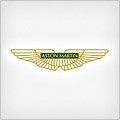
ASTON MARTIN DB11
Generations Timeline, Specs and Pictures

Aston Martin introduced a refreshed version of the DB11 in the form of the DB11 AMR, which offered higher performance and a specific look.
AMR is for Aston Martin, like the M is for BMW or AMG for Mercedes-Benz. These three letters stood for Aston Martin Racing, and it was the carmaker’s department that handled all the racing vehicles and tuned them to win trophies in various racing events or prove that its cars were race-worthy. The AMR version of the DB11 was the last to receive an upgrade for its V12 engine and some other suspension components that transformed the sleek GT into a race-ready vehicle.
For starters, the car received new and V-shaped LED daytime running lights inside the headlights. The lime-green brake calipers and the line surrounding the vehicle at the bottom made it look better from its sides. All 100 units sported a gloss-black roof. In the back, the smoked taillights completed the aggressive package.
Inside, the carmaker added satin dark chrome accents for the gear selector and satin carbon-fiber trims. Its sports-bucket seats featured a lime-green line that resembled the British carmaker’s colors on its race cars. On their headrests, Aston Martin embroidered the AMR lettering.
The most significant changes were under the skin. Its thicker anti-roll bar stiffened bushings for the rear axle, and the 30hp added to the engine made the car better fitted for a race-track. Other than that, it remained the same supple GT that could provide a long and comfortable ride.

Aston Martin skipped the DB10 and jumped from the DB9 straight to the DB11 name.
It was a completely new platform and showed an approach to the Mercedes-Benz brand.
Aston Martin decided to keep the founder’s name on its GT cars, and the DB letters were used on the 11 as well. It was a completely new platform, and it showed a clear cut from the past, where some major components were carried-over from Ford Motor Company, which had the British brand until the 2008 World Financial Crisis.
The specific, shell-like grille on the front was a trademark for the British manufacturer. The headlights, instead, were different than what Aston Martin used to do before. A double-curved line and swept-back lenses enhanced the dynamic shape of the car. The short greenhouse and the wide shoulders over the rear fenders made an impression of power but didn’t spoil the specific GT-lines.
The interior said goodbye to the older buttons and switches carried over from the Ford Fiesta. A completely new design of the center stack featured an infotainment screen placed on top of it. A touch-pad, somehow similar to the one found in some Mercedes-Benz vehicles, appeared on the center console. A large, centrally mounted tachometer with a digital display in the middle for the speedometer took the older analog dials’ place on the instrument cluster. Two additional screens were mounted next to the center dial.
Under the hood, Aston Martin installed a 4.0-liter V8 developed by Mercedes-AMG. The second option was an in-house developed 5.2-liter V12. Both engines were twin-turbocharged and mated to an 8-speed automatic transmission.























































